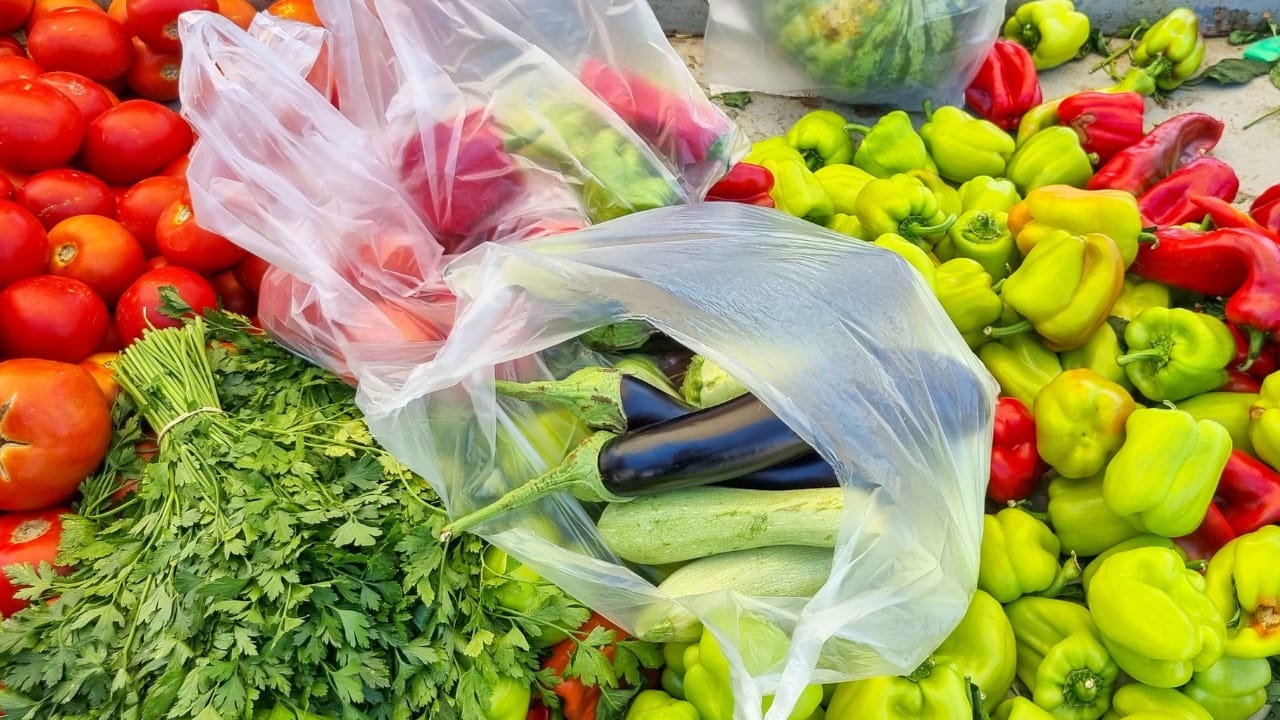24 Useless Expenses You Desperately Need To Slash From Your Budget

Is your salary keeping up with inflation? Probably not. But how do you stretch a paycheck if you already feel like you’re doing without some of the things you want?
Generally, you can’t negotiate the cost of essentials like rent or your car payment. What you can do is slash some useless expenses from the budget.
Sometimes, that means canceling a subscription you barely use. You can also reframe certain essential expenses; for example, you do have to eat, but you don’t have to eat at a restaurant every night.
These two dozen tactics will help you slash the fat from your budget.
1. Precut Fruits and Veggies

Supermarkets sure do make it easy to enjoy fresh pineapple, melons, and vegetables. Just grab a plastic container and head home to munch.
You’re paying for that convenience. According to Reader’s Digest, grocery stores typically charge 40% more for precut produce. Ouch.
2. Gym Memberships

You may be one of those folks who needs a gym membership to feel connected to fitness. A wide variety of equipment, plus amenities like a lap pool and personal training, let you try different wellness approaches.
What’s too often the case is that you join with the best intentions, attend regularly for a month or so, and then start finding reasons not to go. That can add up fast: According to TheMotleyFool.com, the typical gym membership averages $40 to $70 per month. They can also be cheaper – Planet Fitness has a $10 membership – but could be much more if it’s a high-visibility gym.
If you can’t afford even $10 a month, don’t join a gym. But don’t give up on fitness! Walking is free and can even be fun if you walk with a buddy. Look for reputable videos on basic weight training, yoga, stretching, etc.
As the kids say, health is wealth. Don’t shortchange yourself.
3. Name-Brand Items

Sometimes, a generic item just isn’t as good. Most of the time, store-brand foods, toiletries, and cleaning supplies will do the same job as the more expensive name brands.
Pick your spots. If you absolutely must have Bonne Maman strawberry jam, then get it. The rest of the time, focus on saving with generic canned tomatoes, ibuprofen, or aluminum foil.
You might find that Kroger saltines taste as good as the name-brand crackers Premium Saltines – and the nearly $3-per-box price difference means a smaller bite from your budget.
4. Paper Towels

Using paper to wipe up splashed water or drain those salad greens is neither frugal nor eco-friendly. Instead, use worn-out washcloths, bandanas, and dish towels. If a shirt or T-shirt gets too frayed to wear, cut it into squares for kitchen duty.
Paper towels are handy for specific jobs, such as wiping up spilled oil or draining the grease from tempura or French fries. They’re also great for nasty tasks like cleaning up hairballs (thanks, kitty). For the most part, paper towels are an expense you don’t need.
5. Housecleaner

Most people enjoy the comfort of a clean, clutter-free living space. We don’t enjoy the work of keeping it clean. Do it anyway, and save a bundle: According to Angi.com (formerly Angie’s List), the average cost of a cleaner is $118 to $236 per trip.
The simplest way to tidy up is in small stages — say, no more than 20 minutes at a time. You’re much more likely to clean if you know you have to do just one or two things, such as taking out the trash and folding laundry. Best-case scenario: You get in the zone and keep cleaning.
Pro tip: Keep all your cleaning supplies together to avoid wasting time looking for things.
6. Coffee

Nearly one in three people (30.1%) say they’d refuse to give up their morning coffee or other “treat yourself” expenses, according to a survey released by Jenius Bank in July 2024.
To be clear: There’s nothing wrong with an occasional treat. But it will always be cheaper to bring a thermos of coffee from home. Best-case scenario: Your employer provides free coffee, and you drink that.
According to the National Coffee Association of the USA, we spend almost $110 billion on coffee every year. Be a savvy consumer and spend most of your coffee dollars at home.
7. Luxury Haircuts

According to Fash.com, a U.S. haircut averages $15 to $75, although they can go much higher. A good haircut boosts self-confidence and helps you look more professional at work. But it shouldn’t break the bank.
Those luxury salons feel swell: swanky décor, boutique shampoos, shoulder rubs, fancy beverages, etc. Why pay top dollar, though, if you can get a decent style for less?
Ask friends or coworkers or post a social media query to get a range of prices. You can also search online for coupons.
Another option is that beauty schools and barber colleges offer super-low haircut prices. Don’t worry: Instructors monitor these soon-to-graduate stylists. Enjoy telling everyone how little you paid for that fabulous new do, and remember to tip.
8. Pet Grooming

A bottle of pet shampoo and a determined attitude can save you a fortune. Over time, you could get confident enough to cut your dog’s hair if needed.
Even a low-maintenance mutt should have its nails trimmed occasionally. Those clippers will pay for themselves immediately.
Pro tip: See if your city has a vocational high school program that includes pet grooming. Their prices are super-affordable, and, again, instructors are right there to ensure things go well.
9. Out-of-Season Produce

Those tomatoes and peaches look sooo good in January. Even though they cost a bomb, you wind up buying with your heart and not your brain.
Bonus bummer points if that “fresh” peach tastes like it was picked days or weeks ago.
Which it was: Non-seasonal produce is being flown in from Chile or British Columbia or somewhere that isn’t here. Wait for the seasonal stuff, and save.
10. Expensive Cellphone Plans

The big carriers tend to have high price tags. One way around this is to ask if you can join a relative’s or friend’s family plan and pay them the monthly cost of the extra line.
You could also look for a low-cost carrier, such as Mint Mobile or one of Reach Mobile’s “Best Fit” plans. Make sure you compare apples to apples since some lower-cost plans don’t include much data.
11. Extended Warranties

According to ConsumerReports.org, these are rarely worth it. Stores push them so hard because they can keep up to 50% of the fees. That’s not a bad payday, given how many people fall for this.
Instead of buying an extended warranty, do these things:
- Research the most reliable products beforehand so you’re less likely to need a warranty.
- Check to see if your credit card provides warranty coverage.
- Put the money you would have spent on a warranty into a dedicated account and, if possible, add a few dollars a month. Now you’ll have some cash to repair/replace anything that goes kerflooey.
(Pro tip: Some online banks pay 4% interest, which is likely much higher than your current bank or credit union.)
If you must have a warranty, federal law requires retailers to show it in advance. Read it carefully (yeah, it’s boring) to look for exclusions or other surprises.
12. Boutique Foods

We get it: You want to support small businesses. But can you genuinely afford to pay so much for infused oils, artisanal cheeses, and the like? Is that small-batch craft beer really so much better than Samuel Adams?
Think of the opportunity cost of those pricey provisions. Yes, fresh organic produce tastes good. But $10 here and $20 there adds up mighty quickly.
13. Extra Shoes

For health and safety reasons, you should replace your shoes if their soles are badly worn down. But how much footwear do you really need?
Don’t keep buying shoes because they look great or, heaven forbid, because all the cool kids wear that particular athletic shoe brand. That’s precisely what Big Footwear wants you to do.
Pro tip: Re-soling high-quality shoes might be worth it, cost-wise.
14. Dry-Clean-Only Clothing

While dry cleaning can’t always be avoided (especially for suits), alternative fabrics are often available.
According to RealSimple.com, anything made of velvet, silk (in most cases), wool (ditto), acetate, taffeta, or suede should be dry-cleaned. So should structured or lined blazers, jackets, and vintage clothing with lace or delicate accents.
Generally speaking, you can launder cotton, cashmere, polyester, linen, acrylic, and nylon garments at home. So do it, and say “no” to new clothes that you can’t wash.
The savings are enormous; according to CleanMasterMind.com, dry-cleaning blouses/tops and dresses typically costs $6 to $25.
15. Anything From the Checkout Aisle

Candy, gum, and other impulse items live in the checkout aisle for a very good reason – and it isn’t just because kids throw tantrums to get lollipops. Many an adult gives in to the allure of artisanal caramels or frou-frou lip balms.
Make this a rule: Nothing from the checkout aisle will go in my cart. Then, stick to it.
16. Pre-Packaged Snacks

Cute li’l bags of chips, cookies, dried fruit, trail mix, and the like are convenient. When you check the cost per ounce, you’ll realize how much more you’re paying for that convenience.
Instead, buy the regular-sized packages and apportion them in resealable (and reusable) snack bags. That’s a significant savings, especially if you buy the snack bags at the dollar store.
17. Pet Toys

Playtime benefits your pet. But why spend a ton of money to do it?
Instead, search online for advice. For example, searching for “DIY feline enrichment” on YouTube turned up how-to videos from the ASPCA and cat-focused channels.
As for dogs, it’s hard to beat the good old-fashioned STICK. For chasing or tug-of-war, a free stick found in the park is a great way to make your pup happy. Speaking of tug-of-war, there’s plenty of info online about how to make a tugging rope out of old T-shirts.
Your pets will have better lives, and all you have to pay is attention.
18. Bottled Water

Carrying that 24-pack of bottled water to the cash register may give you a good workout. Unfortunately, your wallet will get thinner right along with you. According to Reader’s Digest, a $2 bottle of water costs a nickel to manufacture. That’s a 4,000% markup!
Fill some reusable bottles from the tap and keep them in the fridge. If your local water is foul, buy a Brita or some other kind of filtration pitcher. Pro tip: Both water bottles and filtering systems are often seen at thrift stores.
19. New Clothes

If the clothing you have right now still looks good, then stop shopping.
Seriously. Stay out of your favorite stores; don’t even cruise their websites. If you have friends for whom shopping is socialization, decline the invite and ask them to drop by afterward for iced tea (homemade, of course) and a visit.
And if you do need to replace certain clothing items, again, avoid the mall! Instead, check out thrift stores and consignment shops in your area.
If you can’t find what you want, create a list and a spending limit before heading to your favorite online or brick-and-mortar retailer. Hold yourself to that limit, too, no matter how amazing everything looks.
20. Books

Don’t stop reading! Just stop paying for the privilege – especially since libraries make it so easy now by lending e-books. Or stop by in person and get that bibliophilic thrill at the sight of bookcases crammed with opportunities.
(Pro tip: Look for a giveaway shelf while you’re there. Libraries discard books eventually and may have brand-new titles donated to the book sale but didn’t sell.)
Sites like Open Library and Project Gutenberg will also satisfy your reading urge, with millions of books, both old and new. Check the Little Free Library World Map, but also keep your eyes open since only some LFLs are registered.
Yes, authors need people to buy their new books. But you need to stay within your current budget. Later on, when you can afford to buy books, go right ahead.
Note: Libraries pay for those titles, so the authors are getting paid. Later on, when you can afford to buy books, go right ahead.
21. Frozen Entrees

Maybe you don’t know how to cook. Did you let “but I don’t know howwwww…” stop you from learning to ride a bike, play a video game, or kiss a girl?
Perhaps you don’t like to cook. Join the Cult of Adulthood! We have much to teach you about things you must do because you are a grownup.
Get a slow cooker, air fryer, or Instant Pot and search online for simple recipes. (Pro tip: Look for appliances at thrift stores or yard sales.) When you find dishes that taste great, double the recipe and freeze leftovers for later meals or brown-bag lunches.
After a couple of months of cooking, you won’t believe how much more money you have.
22. Annual Tech Upgrades

Yay, this year’s iPhone/Android is out! But before you buy, ask yourself why. Your “old” phone is only 12 months old!
Sure, the new varieties will have new bells and whistles. But do you really need them, or are you just in the habit of having the latest and greatest That’s not a sustainable way to live.
Unless your workplace requires you to replace your phone (or laptop or tablet) every year, keep the old one for a while.
And if your friends harass you for having “old” tech? Consider replacing them, too.
23. Bottled Tea

Arizona Iced Tea has been lauded recently for still costing 99 cents per 23-ounce can. That’s nice, but it’s still too expensive.
Iced tea is a simple beverage: Add tea to hot water, let it sit a while, remove the tea, and chill. Even if you use higher-quality tea, it’s stupid-cheap to make.
Brew a couple of quarts on Sunday, and you’ll have a frugal beverage to go with your brown bag lunch. Pro tip: Search for “copycat” recipes for your favorite commercially brewed iced teas.
24. Bank or Credit Card Fees

Does your bank charge a monthly “maintenance” fee? Time to look for another bank. Even $5 per month adds up: $60 per year, $120 after two years, $180 after three, and…need we go on?
Sure, finding a new bank can feel like a hassle. Shine up your adulting skills and do it anyway. ConsumerFinance.gov offers tips on how to make the best choice.
As for credit cards, some consumers pay monthly fees because those are the only cards they can get due to poor credit or prior financial blunders. If that’s you, when did you last look for a new card?
A credit union might be willing to work with you, and both secured and unsecured cards could be available for those who are building credit or working through past mistakes. Start looking.





